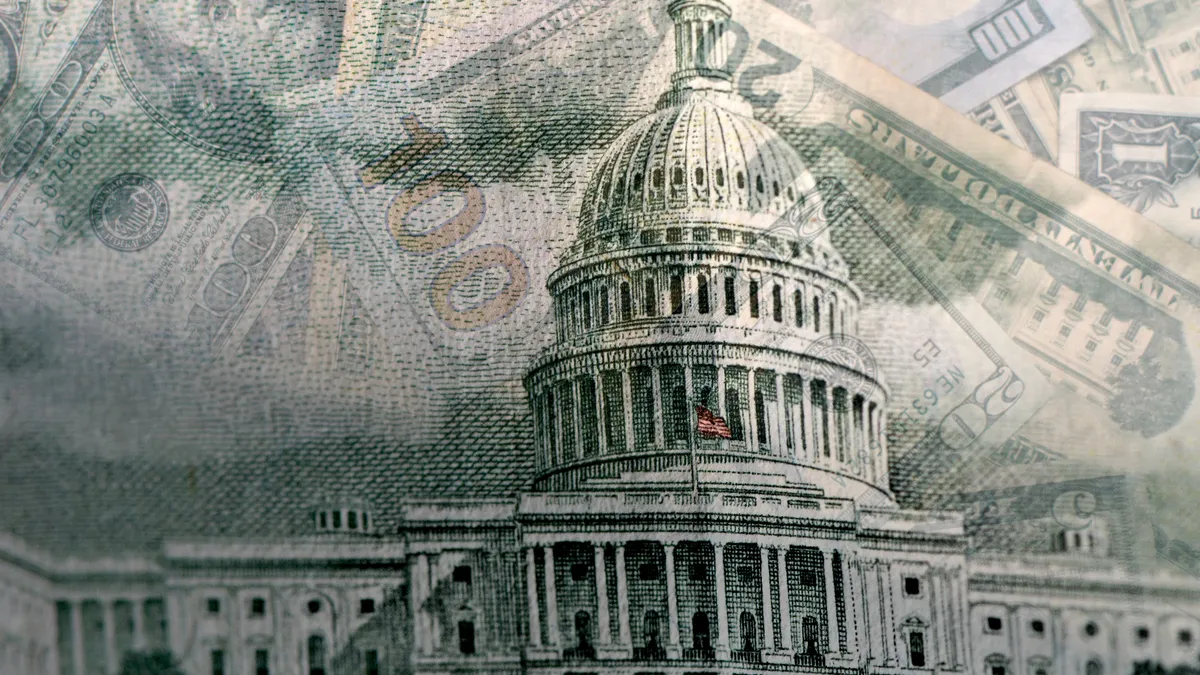Dive Brief:
- U.S. healthcare spending in 2020 spiked much higher than it has in almost the past two decades as a result of federal spending, mostly on aid, due to the COVID-19 pandemic. The increase was nearly 10%, reaching $4.1 trillion, according to a CMS study published Wednesday in Health Affairs.
- The pandemic accounted for major changes in who paid for healthcare as job losses spurred shifts in coverage types, while people deferred care and spent less out of their own pockets and the government pushed out billions for disease surveillance, testing, vaccine production and federal relief grants to providers.
- Health spending's share of the gross domestic product (nearly 20%) jumped the most it has in the 61-year history of CMS creating the annual spending report due to the staggering circumstances the coronavirus created, which also lowered the GDP to Depression-era levels.
Dive Insight:
The number of uninsured people fell slightly last year, but there were significant changes in types of coverage. The number of people in employer-sponsored coverage fell because of job losses — which fueled a jump in enrollment in Affordable Care Act and Medicaid plans.
The 9.7% increase in national health spending is the largest since 2002 as public health activity more than doubled. Spending by the federal government increased 36% in 2020 compared to just shy of 6% in 2019.
But this large increase in spending is not due to a surge in patients seeking care. Spending was fueled by the enormous aid delivered to providers to help prop them up during the economic.
In fact, there was a reduced use of the medical system due to the pandemic as people put off care, the report noted. National health expenditures grew at a slower rate in 2020 than 2019 when excluding this type of COVID-19 relief spending.
"Economic shutdowns, increased pandemic-related hospitalizations, shortages of available medical professionals and personal protective equipment, and increased disease surveillance and testing, among other impacts, all contributed to major changes in the way in which health care was delivered, the sources of funds that paid for care, and the amount of services used," according to the report.
Out-of-pocket spending was down 3.7% after increasing 4.4% in 2019 — the first drop since the Great Recession, as patients avoided services and more people got on the Medicaid and ACA rolls.
Medicaid enrollment was up more than 5% after declining in 2019 and 2018. That was a result of the federal government's order that states freeze unenrollment from the program during the COVID-19 public health emergency.














